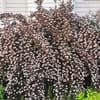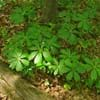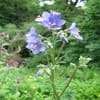Life Span
Perennial
Perennial
Origin
Not Available
America, Southeastern Asia
Types
Center Glow ninebark,
Coppertina ninebark, Little Devil ninebark
Not Available
Habitat
Cliffs, hedge rows, rocky banks of streams, sandy seeps, Wooded hillsides
Homesteads, Tropical rainforest
USDA Hardiness Zone
3-8
10-11
Sunset Zone
A1, A2, A3, H1, H2, 1a, 1b, 2a, 2b, 3a, 3b, 4, 5, 6, 7, 8, 9, 10, 11, 12, 13, 14, 15, 16, 17, 18, 19, 20, 21, 22, 23, 24
1a, 1b, 2a, 2b, 3a, 3b, 4, 5, 6, 7, 8, 9, 10, 11, 12, 13, 14, 15, 16, 17
Habit
Not Available
Upright/Erect
Minimum Height
Not Available
Minimum Width
Not Available
Flower Color
Not Available
White
Flower Color Modifier
Not Available
Bicolor
Fruit Color
Not Available
Non Fruiting Plant
Leaf Color in Spring
Not Available
Green, Dark Green
Leaf Color in Summer
Not Available
Green, Dark Green
Leaf Color in Fall
Not Available
Green, Dark Green
Leaf Color in Winter
Light Green
Light Green
Leaf Shape
Palmate
Lanceolate
Plant Season
Not Available
Spring, Summer, Fall, Winter
Sunlight
Full Sun, Partial Sun
Full Shade, Partial Sun
Growth Rate
Not Available
Fast
Type of Soil
Not Available
Loam, Sand
The pH of Soil
Not Available
Neutral, Alkaline
Soil Drainage
Not Available
Well drained
Bloom Time
Summer, Late Summer, Early Fall
Spring, Late Spring, Early Summer
Repeat Bloomer
Not Available
No
Tolerances
Drought
Shade areas
Where to Plant?
Ground, Pot
Container, Ground
How to Plant?
Layering, Stem Planting
From Rhizomes, Stem Cutting
Plant Maintenance
Medium
Medium
Watering Requirements
Requires watering in the growing season, Water Deeply
Average Water Needs, Does not require regular watering, Over-watering can cause leaf problems or root diseases
In Summer
Moderate
Lots of watering
In Spring
Average Water
Moderate
In Winter
Adequately
Average Water
Soil pH
Not Available
Neutral, Alkaline
Soil Type
Not Available
Loam, Sand
Soil Drainage Capacity
Not Available
Well drained
Sun Exposure
Full Sun, Partial Sun
Full Shade, Partial Sun
Pruning
Remove damaged leaves, Remove dead branches
Cut leaves after fall, Prune to stimulate growth, Remove dead leaves, Remove dead or diseased plant parts, Remove deadheads
Fertilizers
Fertilize every year
All-Purpose Liquid Fertilizer, Organic Flower Fertilizer
Pests and Diseases
Aphids, Powdery mildew, Red blotch
Pests and diseases free
Plant Tolerance
Drought
Shade areas
Flowers
Not Available
Showy
Flower Petal Number
Not Available
Single
Showy Fruit
Not Available
No
Edible Fruit
Not Available
No
Fragrant Flower
Not Available
Yes
Fragrant Fruit
Not Available
No
Fragrant Leaf
Not Available
No
Fragrant Bark/Stem
Not Available
No
Showy Foliage
Not Available
Yes
Showy Bark
Not Available
No
Foliage Texture
Not Available
Fine
Foliage Sheen
Not Available
Glossy
Invasive
Not Available
No
Self-Sowing
Not Available
No
Attracts
Not Available
Butterflies
Allergy
Not Available
no allergic reactions
Aesthetic Uses
Showy Purposes
Beautification, Showy Purposes
Beauty Benefits
No Beauty Benefits
No Beauty Benefits
Environmental Uses
Air purification
Indoor Air Purification
Medicinal Uses
Emetic, Laxative, Woman infertility
No Medicinal Use
Part of Plant Used
Whole plant
Whole plant
Other Uses
Used as Ornamental plant, Used for its medicinal properties
Decoration Purposes, Showy Purposes
Used As Indoor Plant
No
Yes
Used As Outdoor Plant
Yes
Yes
Garden Design
Not Available
Edging, Groundcover, Mixed Border, Rock Garden / Wall
Botanical Name
PHYSOCARPUS
Spathiphyllum cochlearispathum
Common Name
Ninebark
Spath, Peace lilies
In Hindi
Ninebark
शांत लिली
In German
Ninebark
peace Lily
In French
Physocarpe
Lily paix
In Spanish
ninebark
Paz Lily
In Greek
ninebark
ειρήνη Lily
In Portuguese
ninebark
Lily paz
In Polish
Ninebark
Peace Lily
In Latin
Ninebark
Pax lilium
Phylum
Magnoliophyta
Tracheophyta
Class
Magnoliopsida
Liliopsida
Order
Rosales
Alismatales
Genus
Physocarpus
Spathiphyllum
Clade
Angiosperms, Eudicots, Rosids
Angiosperms, Monocots
Tribe
Neillieae
Spathiphylleae
Subfamily
Amygdaloideae
Monsteroideae
Season and Care of Ninebark and Peace Lily
Season and care of Ninebark and Peace Lily is important to know. While considering everything about Ninebark and Peace Lily Care, growing season is an essential factor. Ninebark season is Not Available and Peace Lily season is Not Available. The type of soil for Ninebark is Not Available and for Peace Lily is Loam, Sand while the PH of soil for Ninebark is Not Available and for Peace Lily is Neutral, Alkaline.
Ninebark and Peace Lily Physical Information
Ninebark and Peace Lily physical information is very important for comparison. Ninebark height is Not Available and width Not Available whereas Peace Lily height is 65.00 cm and width 25.00 cm. The color specification of Ninebark and Peace Lily are as follows:
Ninebark flower color: Not Available
Ninebark leaf color: Not Available
Peace Lily flower color: White
- Peace Lily leaf color: Green and Dark Green
Care of Ninebark and Peace Lily
Care of Ninebark and Peace Lily include pruning, fertilizers, watering etc. Ninebark pruning is done Remove damaged leaves and Remove dead branches and Peace Lily pruning is done Cut leaves after fall, Prune to stimulate growth, Remove dead leaves, Remove dead or diseased plant parts and Remove deadheads. In summer Ninebark needs Moderate and in winter, it needs Adequately. Whereas, in summer Peace Lily needs Lots of watering and in winter, it needs Average Water.





